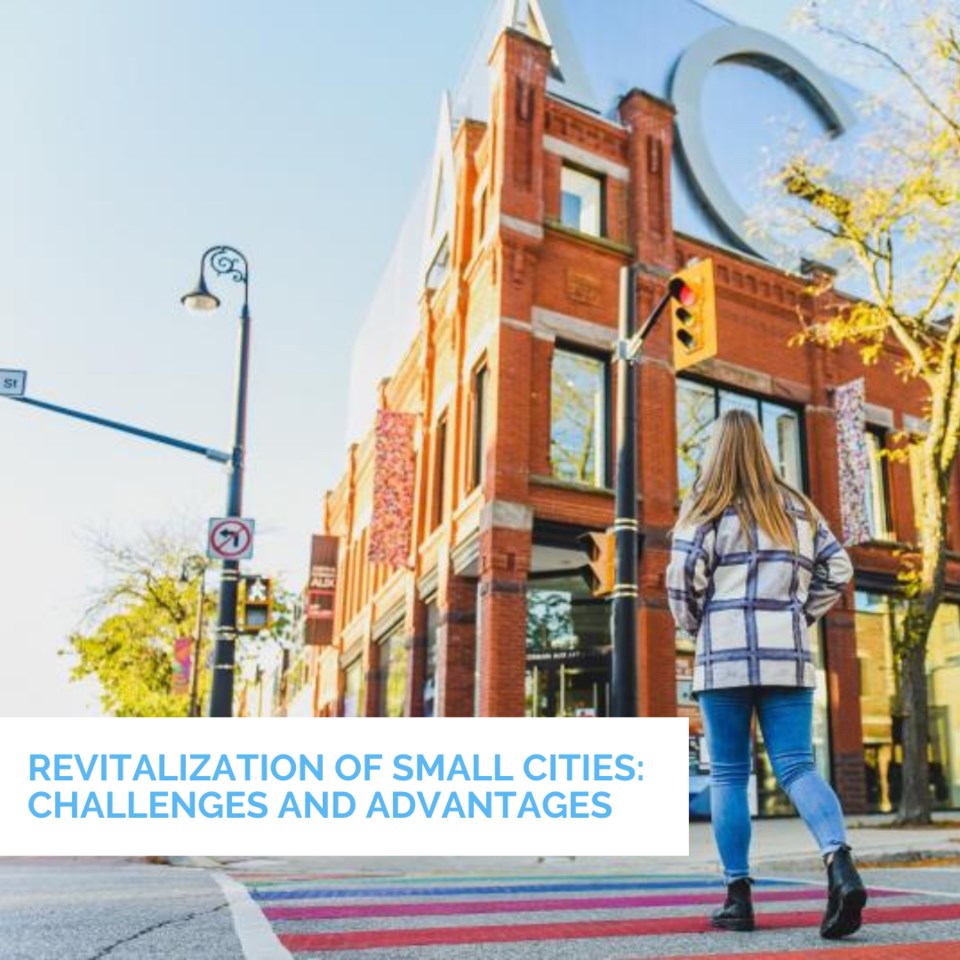We often hear about the intriguing stories of cities undergoing transformative journeys towards creating livable, walkable, and vibrant downtown spaces. While these tales often spotlight larger cities, the potential for revitalization is not confined to urban giants; it also extends to smaller cities just like Sarnia (of course, not without its own set of challenges and advantages)!
Challenges:
- Resource Limitations: Smaller cities grapple with limited financial resources, relying heavily on grassroots movements and private investments. Local governments CAN publicly support these movements and establish relatively inexpensive branding campaigns that highlight citizen involvement and entrepreneurial initiatives.
- The “Mayberry Condition”: Smaller cities often exist as tranquil islands in rural landscapes, where the pace of life is slower, and resistance to change is more pronounced. Initiatives for improvement can trigger opposition, particularly from those resistant to altering the status quo, especially when taxpayer funds are involved.
- Lack of Visible Examples: Convincing both local and external communities about the importance of walkability and urban revitalization in the face of joblessness, poverty, and crime can be challenging. Despite numerous examples of small cities experiencing positive socioeconomic growth through simple improvements, these successes often remain unnoticed by the broader public.
Advantages:
- Ease of Impact: In smaller communities, the power to effect positive change is more tangible, with even a single voice capable of inspiring movement. This contrasts with larger cities, where community impact can feel like an uphill battle against overwhelming forces.
- “What’s Going On Tonight?”: Smaller cities still have lots to do without the overwhelming factor. It’s easier for residents to collectively get behind an event, an activity or an organization because there are simply fewer choices. And when communities come out and collectively support the same activities and organizations, residents receive a greater sense of community involvement and participation, and a powerful sense of local pride is the result.
- Social Media: Social media has become a powerful tool, connecting local residents to community happenings on a personal level. The ability to witness friends and neighbours enjoying local events fosters a stronger sense of community engagement.
Smaller cities can benefit from walkability, repurposing of historic architecture and other urban revitalization projects, just like their larger counterparts. Challenges exist, but since many residents who live in these communities do so because they prefer a closely-knit, personable environment, the potential for people to work together for a better tomorrow is that much greater.
nuSarnia is a passionate group of social entrepreneurs committed to making Sarnia the best it can be – a vibrant, lively city where people are excited to live, work, play and learn. We are committed to raising awareness, sharing knowledge, acquiring wisdom, fostering collaboration and attentively listing to create a more connected, active and healthy community.
Follow them: Instagram; Facebook; Website
